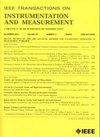基于多照明模式和多任务学习算法的大孔径光学表面弱特征微瑕疵快速检测系统
IF 5.6
2区 工程技术
Q1 ENGINEERING, ELECTRICAL & ELECTRONIC
IEEE Transactions on Instrumentation and Measurement
Pub Date : 2024-10-15
DOI:10.1109/TIM.2024.3472831
引用次数: 0
摘要
表面损伤和污染物的出现会缩短高功率激光设备中大孔径光学器件的使用寿命,而对这些缺陷进行高效准确的检测是设备维护中不可或缺的一部分。对成像系统和检测算法来说,实现对大孔径光学器件表面(430 美元/次 430 毫米)微米级缺陷(20~/mu 美元/米)的快速检测都是一个巨大的挑战。为解决这一问题,设计了一种基于多照明系统和暗场成像原理的快速检测系统,通过单帧成像和图像处理,可一次性完成光学器件正反面的全孔径检测。多照明模式的应用提高了不同类别弱特征缺陷的区分度,为缺陷分类和测量提供了充分的信息。此外,还设计了一个联合缺陷分类和尺寸回归的多任务深度学习(DL)框架,以提高系统对微缺陷的分类能力和尺寸测量精度。实验结果表明,该系统能以每件小于 1.5 分钟的速度对光学器件进行快速检测。四类缺陷的分类准确率为 98.5%,尺寸测量的平均相对误差为 14.8%。在超过成像系统分辨率极限的 20-150~mu $ m 范围内,检测系统仍然保持了较高的准确率(98.9%)和较低的测量误差(15.6%)。针对大孔径光学器件提出的检测系统和方法实现了对弱特征微缺陷的快速检测,为精密光学器件的快速、准确和低成本检测提供了极具前景的解决方案。本文章由计算机程序翻译,如有差异,请以英文原文为准。
Rapid Inspection System for Weak Feature Micro-Flaw on Large-Aperture Optics Surface Based on Multi-Illumination Modes and Multitask Learning Algorithms
The occurrence of surface damage and contaminants can shorten the service life of large-aperture optics in high-power laser facilities, and efficient and accurate inspection of these flaws is an integral part of facility maintenance. Achieving rapid inspection of micrometer-level flaws (
$\gt 20~\mu $
m) on large-aperture optics surface (
$430\times 430$
mm) is a great challenge for both imaging systems and detection algorithms. To solve this problem, a rapid inspection system based on multi-illumination system and dark-field imaging principle is designed, which can complete full-aperture inspection of front and back surface of optics at one time through single-frame imaging and image processing. The application of multi-illumination modes increases the differentiation between different categories of weak feature flaws and provides sufficient information for flaw classification and measurement. A multitask deep learning (DL) framework that joints flaw classification and size regression is also designed to improve the classification capability and size measurement precision of the system for micro-flaws. The experimental results show that the system can perform a fast inspection of optics at a rate of less than 1.5 min per piece. The classification accuracy for four categories of flaws is 98.5% and the mean relative error (MRE) of size measurement is 14.8%. In the range of 20–
$150~\mu $
m, exceeding the resolution limit of the imaging system, the detection system still maintains a high accuracy (98.9%) and low measurement error (15.6%). The proposed inspection system and the method for large-aperture optics achieve rapid detection of weak feature micro-flaws, which provides a highly promising solution for rapid, accurate, and low-cost inspection of precision optics.
求助全文
通过发布文献求助,成功后即可免费获取论文全文。
去求助
来源期刊

IEEE Transactions on Instrumentation and Measurement
工程技术-工程:电子与电气
CiteScore
9.00
自引率
23.20%
发文量
1294
审稿时长
3.9 months
期刊介绍:
Papers are sought that address innovative solutions to the development and use of electrical and electronic instruments and equipment to measure, monitor and/or record physical phenomena for the purpose of advancing measurement science, methods, functionality and applications. The scope of these papers may encompass: (1) theory, methodology, and practice of measurement; (2) design, development and evaluation of instrumentation and measurement systems and components used in generating, acquiring, conditioning and processing signals; (3) analysis, representation, display, and preservation of the information obtained from a set of measurements; and (4) scientific and technical support to establishment and maintenance of technical standards in the field of Instrumentation and Measurement.
 求助内容:
求助内容: 应助结果提醒方式:
应助结果提醒方式:


